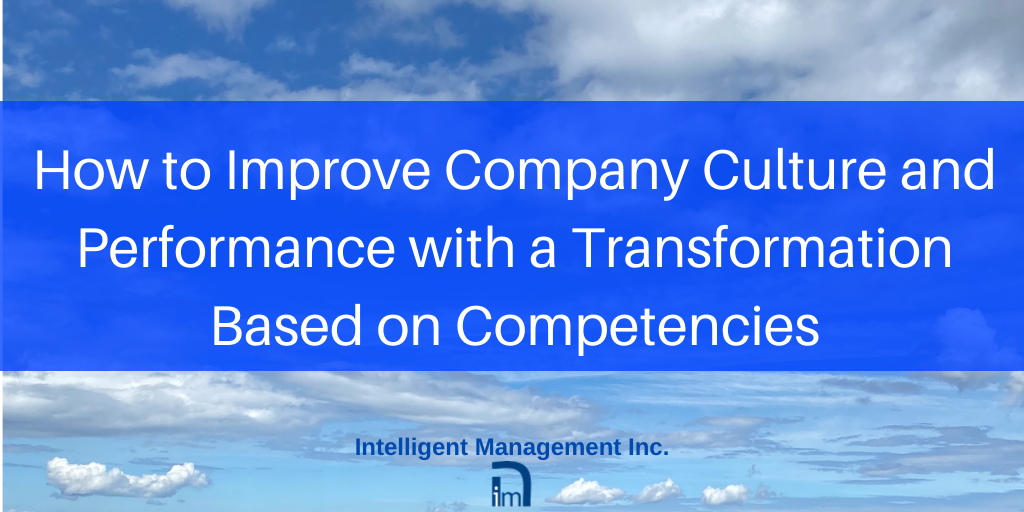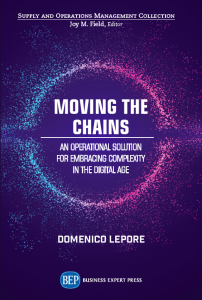
In the previous article in this series, Dr. Domenico Lepore covered the key ingredients needed to gear up for complexity and speed. Here in Part 6 he introduces the idea of competencies as the engine for transformation.
As declared in several publications over the years, our goal at IM is the transformation of the prevailing, silo-based, organizational design and management style into one of whole system optimization.
Deming and Goldratt have provided all the elements of science, method and thought process to enact this transformation. We decided to use them to guide the next step: redesign the organization for Quality, enhanced Flow and greater Involvement of people.
If Quality (the management of interdependencies) and Flow (what determines the pace at which we achieve the goal we set for ourselves) are the cornerstones of sustainable competitiveness, how can we create a genuine involvement in the organization and put all the good intentions of HR to work? How can our human resources be valued and their resourcefulness enhanced, exactly? How can we, at last, reconcile a successful local performance with the overall goal of the organization, its bottom line?
Building a systemic organization via a Network of Synchronized Competencies in Projects
The two driving needs of the inherent conflict in the development of human resources are “individual accountability” and “performance of the system”. These arguably non-conflictual needs invariably lead on the one hand to an organization design that is intrinsically hierarchical (siloed) and on the other hand to a different, flow-based, interdependency-focused design.

How can we reconcile these positions, satisfy both needs and achieve the goal? How can we break free from this conflict? How can we escape the excruciating “teamwork empowering” sessions that inevitably become shipwrecked on the rocks of the “year end individual performance assessment”?
Let’s ask: what must people be accountable for? What is it that we REALLY want from our people? And, even more importantly, what are people REALLY seeking when they go to work, besides a healthy, safe and caring environment?
People, all of us, as Dr. Deming explained very clearly long before nebulous development programs became fashionable and the new silo called HR was created, are intrinsically motivated by learning and belonging. People, unlike any other form of earthly life, have the desire to be part of something bigger than themselves. Any successful organization does precisely that: fosters in people the desire to belong and provides the environment for people to develop.
Develop what, precisely?
As far as the life of an organization goes, people are recruited for their competencies, NOT their skin colour, NOT their looks, NOT their faith, NOT their family background (Yeah, right…. this is for another discussion….).
These competencies are only marginally captured by the CV and almost completely frustrated by the silo where they are hosted. In other words: individuals bring to the table a much more varied and rich set of competencies than the CV reveals and many of these competencies are nullified or frustrated through the myopic functional lens.
This is the hidden treasure, the untapped trove of energies that needs to be unleashed by the “suitable organizational design” – step 7 of The Decalogue.
Resources are not the property of a silo, they belong to the organization (and, in a more visionary way, to the supply chain they are part of) and so do their competencies. The more competencies a person has (and develops) the more they can be part of the activities that make up the life of the organization.
The orchestration of competence-based activities geared towards an identified goal is the very definition of “Project”. The coordination of all these projects is made far easier by having a larger pool of competencies to draw from; the number of projects that can be handled in a given period increases and all the talents available can contribute fully.
A new kind of control
Dr. Deming would reply to questions pertaining to “people’s motivation” by saying: “…if management stopped demotivating their employees then they wouldn’t have to worry so much about motivating them.”
This is precisely the point.
Demotivation is actively nurtured, especially in large organizations, by the myriad of programs aimed at connecting individual performance with the company’s bottom line. Invariably, these programs fail to recognize that very little can be done to increase company performance by individuals who are slotted into a poorly designed organization. The shift has to happen at organizational design level by recognizing the web-like nature of work and reflecting that through a coherent control mechanism.
As mentioned earlier, capturing and managing the effect of interactions through statistical understanding (SPC) is critical; structuring these interactions into a manageable, measurable format is another important step. Projects do exactly that: they convey, powerfully and cohesively, people’s desire to contribute with their knowledge to the achievement of clearly communicated and shared goals.
By allowing individual competencies to be gainfully leveraged through Projects, we achieve two fundamental results: individuals can give their maximum input via their knowledge-based contribution AND we remove a major form of frustration and disempowerment engendered by “performance assessment” and “year-end reviews”. Most importantly, by allowing individual talent to shine tangibly (not just paying lip service to it) in a way that is systemic and measurable, we foster a genuine culture of self-empowerment that feeds directly into company results.
What we achieve by synchronizing these available competencies across projects is to maximize what existing competencies can contribute to the success of the organization. No need for further investigations on individual accountability and seat of the pants, bias-driven assessments.
How do we exemplify all this? How could we embed all this into a…. tool?
The next post in this series looks at a practical way to synchronize competencies in a network of projects. Sign up to receive our weekly blog in the form at the top of this page.
- OTHER ARTICLES IN THIS SERIES:
- Deming, Goldratt and Critical Chain – the Pillars for Transforming Management and Organizations Today
- A New Perspective for Business Management
- Solving the Core Problem that Prevents Companies from Achieving Sustainable Growth
- How to Scale a Business Sustainably
- The Key Ingredients of an Organization Redesign for Complexity and Speed
- How to Improve Company Culture and Performance with a Transformation Based on Competencies
- Transforming to an End-to-end Operating Model with a Whole System Technology
- Scheduling a Project – the Most Critical Activity for Every Business
Contact: intelligentmanagement@sechel.ws
SCHEDULE AN INTRODUCTORY CALL WITH US ‘







Leave a Reply